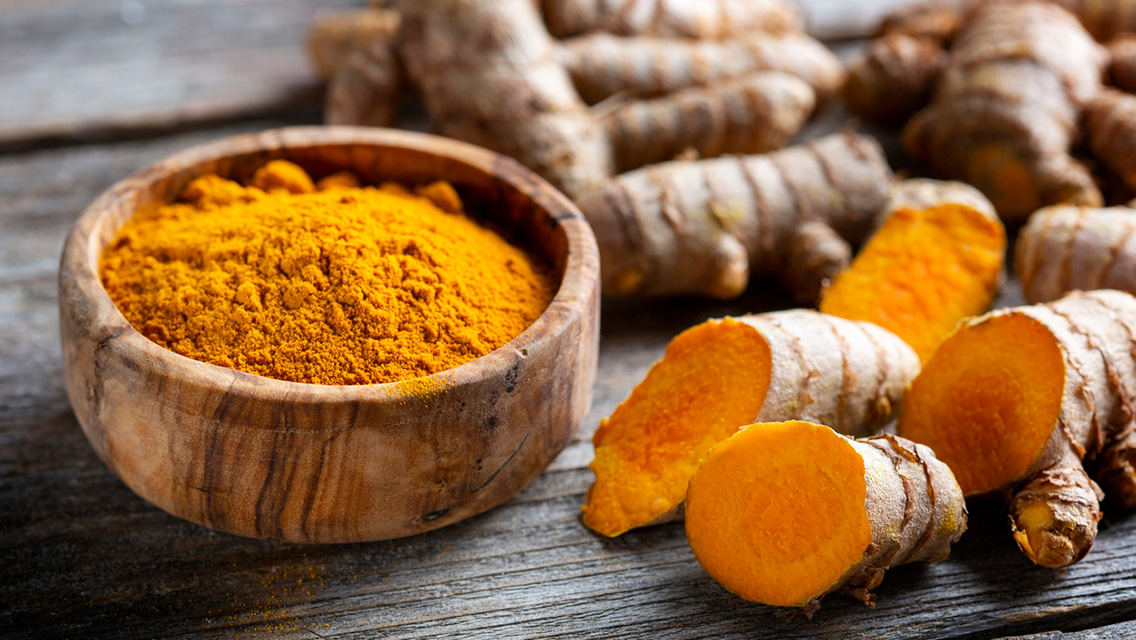Turmeric is a kitchen staple in India, found in just about every dish that crosses the table — a fact that has not been lost on researchers, who observed 30 years ago that the incidence of chronic illnesses among people in India is significantly lower than in most Western countries, especially the United States.
Turmeric owes its preventive and curative characteristics to its active ingredient curcumin, a compound so diverse and powerfully rich in antioxidant and anti-inflammatory actions that thousands of studies have shown that it protects and improves the health of virtually every organ in the body. Turmeric’s powerful properties help prevent oxidation and the resulting chronic, low-grade inflammation that has been shown to trigger or advance many of the diseases of modern life.
In fact, wide research shows that turmeric, taken as supplemental curcumin, is as effective and, in some cases, even more effective than pharmaceutical drugs — without their side effects. Recently, my colleagues and I compared curcumin with anti-inflammatory and pain-killing medications. And we compared curcumin with cancer drugs, testing those agents for their effectiveness in reducing inflammation and stopping the proliferation of cancer cells. Curcumin proved to be more effective at reducing inflammation than over-the-counter aspirin and ibuprofen, and as effective as the more powerful prescription drug Celebrex. It also proved as effective in thwarting breast cancer cells as tamoxifen, a drug widely used to stop the spread or recurrence of breast cancer. These results are nothing less than astounding.
“If I had only one single herb to depend upon for all possible health and dietary needs, I would chose the Indian spice turmeric,” says David Frawley, PhD, founder and director of the American Institute for Vedic Studies in Santa Fe, N.M. It is a spice, he says, that everyone “should get to know and live with.”
Turmeric is the only readily available edible source of curcumin, so try to consume it as much as possible.
Turmeric may also help prevent and treat:
Acne, allergies, Alzheimer’s, arthritis, asthma, cancer, cholesterol problems, colitis (inflammatory bowel disease), cystic fibrosis, depression, dermatitis, type 2 diabetes, eczema, eye infection, flatulence, gallbladder disease, gout, gum disease, heart disease, high blood pressure, itching, liver disease, macular degeneration, obesity, pain, Parkinson’s disease, pollution side effects, psoriasis, rash, scleroderma, stroke, wounds.
How to buy turmeric:
Most of the world’s turmeric comes from two places in India: Alleppey and Madras. I recommend buying turmeric from Alleppey, if possible, since research has shown it contains nearly two times more curcumin than turmeric from Madras. Turmeric is a root, like ginger, but it is very hard to grind. For this reason, it is almost always sold already ground. If possible, buy turmeric in a quantity you will use up in a few months, since it tends to quickly lose its aromatic flavor. (Find more tips for buying turmeric at “How to Buy and Store Turmeric“.)
Cooking tips:
- Before sautéing vegetables or making stir-fry, heat oil in a pan and sprinkle it with turmeric, stirring for a few seconds so it toasts a bit but doesn’t burn.
- Add turmeric to fried onions (one study found that onions and turmeric work together, synergistically, to protect against cancer).
- Use turmeric generously in lentil or dal dishes.
- Blend it in melted butter and drizzle over cooked vegetables.
- Add a teaspoon of turmeric to a large pot of chicken noodle soup.
- Add a teaspoon of turmeric to homemade chili.
- Eat more yellow mustard, which contains turmeric.
- Try this creamy, rich latte is packed with anti-inflammatory and thyroid-supporting nutrients.
Discover the transformative power of herbs and spices as nature’s healing wonders. Dive deeper into their remarkable health properties by exploring “5 Healing Spices,” from which this article was excerpted.





This Post Has 0 Comments